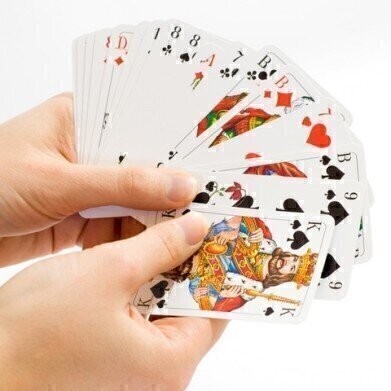LC-MS
A Playing Card for Life — PAD’s and Testing Drugs
Oct 03 2016
Counterfeit, fake or substandard pharmaceuticals are not too much of an issue in the UK. You can certainly be sure that the medicines prescribed by your GP and dispensed by your local pharmacist are genuine and that they will work. But in other parts of the world — particularly in developing countries — this is not always the case.
Medicines in Africa
A recent BBC report — Counterfeit drugs: ‘People are dying every day’ — highlights the effect that counterfeit drugs can have. Over 120,000 people die every year in Africa as a result of counterfeit anti-malarial drugs — with the tablets being either substandard or containing no active ingredients.
One company — Sproxil — has offered a relatively simple solution since 2009 using mobile phones to help defeat counterfeiters. Each packet of drugs contains a scratch panel hiding a code, the user simply scratches of the code and texts the number to Sproxil — they can then confirm if the drug is genuine or counterfeit.
But the issue is not just with counterfeit medicines — sometimes it is the efficacy of genuine medicines that can be the problem. Drugs can deteriorate for many reasons — but two of the main issues are storage conditions and storage time. In field conditions in developing countries, fridges and a good supply chain are not necessarily available. This is where a device that could pass for a playing card comes into its own — welcome to PAD.
Paper analytical device — PAD
If we need to check a drug’s efficacy in the UK — we could turn to analytical labs who would have access to the latest instrumentation. Recent developments in the use of liquid chromatography mass spectrometry in pharmacology are discussed in the article, Capillary Flow LC-MS Unites Sensitivity and Throughput. But in a field station in the middle of Africa, health professionals would probably not have access to such luxuries.
That’s where paper analytical devices (PADs) come in — a simple concept which could have far reaching consequences for patient welfare. The device was developed at the University of Notre Dame in the US and the researchers suggest that PADs can detect more than 60 different types of medications.
A PAD is about the size of a playing card and consists of twelve lines loaded with reagents which are separated by wax barriers. The medicine under investigation — for example a tablet — is crushed across the lanes before the bottom of the card is dipped in water. The water is drawn up the lines which allows the reagent to react with the drug sample.
The PAD gives a readout that a trained operator can read and determine if the drug is real and if it is still useful — a kind of barcode readout. The ability of the PDAs to detect drugs have been tested in the labs using LC-MS and in field trials.
Hopefully, in the coming years many more people will get the medicines they need thanks to a simple playing card size device.
Digital Edition
Chromatography Today - Buyers' Guide 2022
October 2023
In This Edition Modern & Practical Applications - Accelerating ADC Development with Mass Spectrometry - Implementing High-Resolution Ion Mobility into Peptide Mapping Workflows Chromatogr...
View all digital editions
Events
Apr 23 2024 Kintex, South Korea
Apr 23 2024 Seoul, South Korea
Apr 28 2024 Montreal, Quebec, Canada
May 05 2024 Seville, Spain
May 15 2024 Birmingham, UK














